Toshiba Camileo B10 Review
Toshiba Camileo B10
Toshiba's Camileo B10 is no groundbreaking innovation in the pocket Internet genre, but it is good value.
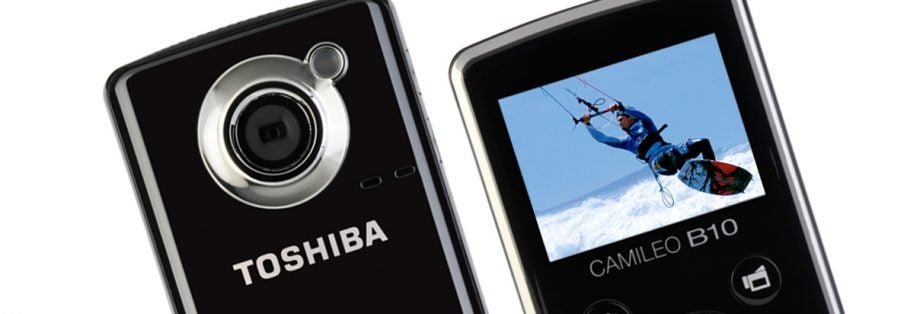
Verdict
Pros
- Some manual settings
- Image stabilisation
- Good value
Cons
- Digital zoom
- Mediocre image quality
- No built-in USB plug
Key Specifications
- Review Price: £95.00
- 5 Megapixel CMOS
- 16x digital zoom
- SDXC memory slot
- LED video light
- Slow motion and time lapse modes
The basic format is what you would expect. The B10’s chassis is about the size of a small mobile phone, and the lens sits on one side in a similar fashion too. There’s a D-pad surrounded by a smattering of buttons on the other side, beneath a 2in TFT. Most of the time, you will just turn the unit on, shoot some video and a picture or two, and then turn it off. There’s no USB plug built directly in, leaving you to rely on a separate cable. But otherwise the usual trademark features of a pocket Internet camcorder are in evidence.
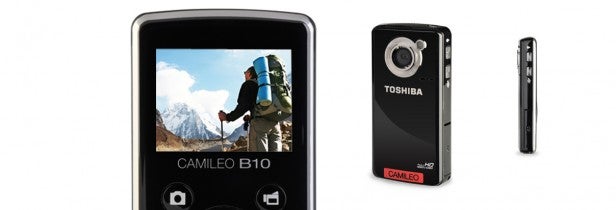
The B10 does have a few more features than many of its competitors, though. The 16x telephoto seems impressive at first glance, but it’s still digital so noticeably pixellates the image when you zoom in. There’s a discrete button on the side which turns on the LED video light and toggles between this and what Toshiba calls “digital light” mode. This is essentially a single-setting video gain option, which does boost brightness, but at the expense of washing out the colour and introducing a grainy quality to the image due to sensor noise. The LED video light is no better than smartphone LED video lights, too, so only effective at very close range. We found it petered out rapidly beyond a metre range, but could still come in handy for shooting nearby objects in the dark.
The remaining settings require a trip to the main menu. Here you can find an Effect section with a very modest selection of scene modes – just night, soft skin and backlight compensation, which we wouldn’t normally classify in this category. On top of automatic mode, white balance options include fluorescent and tungsten indoor presets, but just a sunny one for outdoors, and no fully manual mode. There are also black and white, “classic” (sepia) and negative filters you can apply, although we always recommend leaving such drastic alterations to the editing stage. There’s also no direct access to exposure levels, unlike on the [linkout:https://www.trustedreviews.com/polaroid-x720_Camcorder_review Polaroid X720].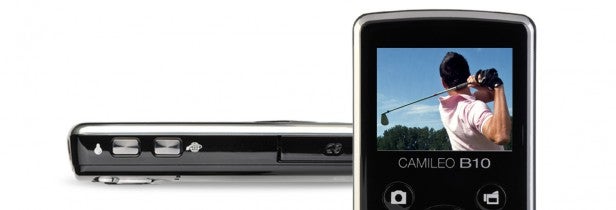
A further menu setting provides access to another decent array of options. You can turn on image stabilisation, which is of the less effective digital rather than optical variety, but still welcome where many pocket Internet camcorders have no stabilisation at all. There’s a motion detect mode, which will trigger recording automatically when activity is detected in the frame – ideal for catching thieves, spying on your friends, or capturing animals in their lairs. You can shoot slow motion, with the footage being grabbed at 120 frames per second with a 320 x 240 resolution and then converted to 30 frames per second, so it plays smoothly at a quarter of the speed.
A Pre-rec function is also available. It buffers a few seconds of video at all times, and then adds it on the beginning when you press record. This effectively acts as if you pressed the button a few seconds earlier, stopping you from missing important events. Time lapse options include capturing a frame every 1, 3 and 5 seconds. So there are certainly a few more shooting modes available than just point and shoot.
Toshiba has never provided quite such comprehensive specifications for its camcorders as some big-name electronics companies. So all we know about the CMOS is that it has a 5Mpixel resolution, not its size. But this is more than enough pixels to shoot the top Full HD video resolution, which is captured at 30 frames per second. You can also shoot 720p video at 30 or 60 frames per second, and VGA at 30 frames per second. Still image options include 3Mpixels, 5Mpixels, and 8Mpixels, with the latter clearly involving some interpolation. There is a modest 128MB of memory on board, but not even all of that is free. So you will need to rely on the SDXC-compatible memory card slot. A gigabyte of storage will be enough for 14 minutes of Full HD video.
Being a pocket Internet camcorder, the Camileo B10 comes with software built into the device itself. Called Camileo Uploader, it’s limited to just sending your footage to YouTube, Facebook and TwitVid, and your images to Facebook and Picasa. There are no facilities for trimming your clips or improving your photos in any way.
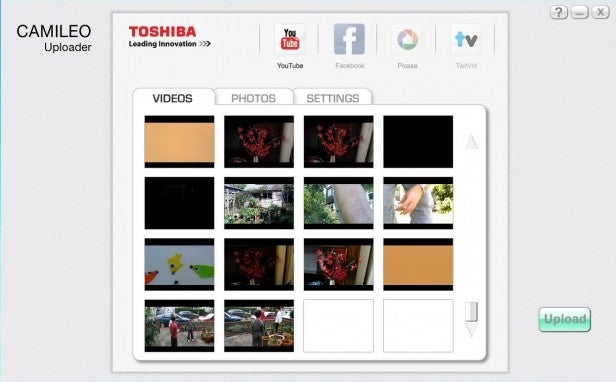
Previous Toshiba models haven’t excelled in their video performance, particularly in low light. The B10 shows some improvements, but this is still not the best image quality we’ve seen from this class of camcorder. There is less grain in low light than earlier Camileos, but the image is still quite dark and colours lose fidelity. In good lighting, colours are a little over-saturated, but detail levels are decent and the picture is sharper than budget camcorders have traditionally produced.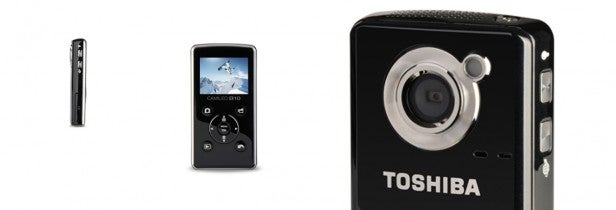
Verdict
The Toshiba Camileo B10 has a few more features than many pocket Internet camcorders, particularly the fun time lapse and slow motion options, but image quality is decidedly mediocre. Fortunately, the pricing is also middling at under £100. So whilst this isn’t a particularly groundbreaking model, with nothing to single it out for special attention from the crowd, it is at least good value.
Trusted Score
Score in detail
-
Design 7
-
Image Quality 6
-
Features 6
-
Value 9
-
Perfomance 6
Image Processor
| Image Sensor | CMOS with 5Mpixels |
| Image Sensor Quantity | 1 |
Lens Features
| Digital Zoom (Times) | 16x |
Video Recording
| Recording Media | SD card |
| Video Capture Format | MPEG-4 AVC H.264 |
| Max Video Res | 1920 x 1080 |
| Image Stabilisation | Digital |
General Features
| LCD Screen Size (Inch) | 2in |
| On-board Storage (Gigabyte) | NGB |
| On-board Microphone | Stereo |
A/V ports
| HDMI | Mini |
| USB 2.0 | Yes |
| Audio / Video Out | No |
| Audio / Video In | No |
| External Microphone | No |
Physical Specifications
| Weight (Gram) | 0.082g |


